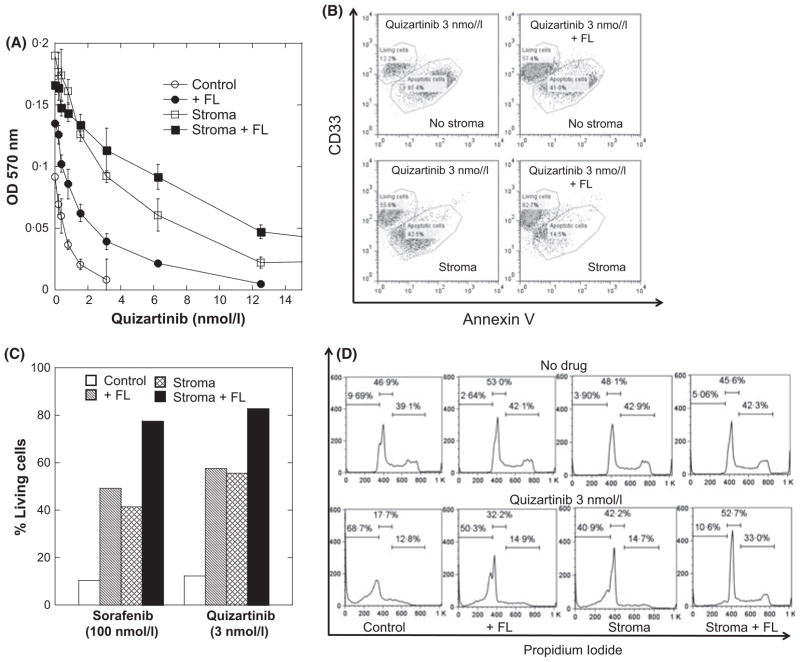Fig. 1.
The protective effects of exogenous FL and bone marrow stroma against FLT3 inhibition in Molm14 cells. (A) Molm14 cells were treated with increasing dosage of quizartinib in RPMI medium (10% fetal bovine serum) for 72 h under four conditions: control [no FLT3 ligand (FL) and no stroma], with FL (2·5 ng/ml), on stroma, with FL on stroma. Cell viability was then determined using the MTT assay and measuring the optical density at 570 nmol/l (OD 570 nm). Results are plotted as percentage of dimethyl sulfoxide control. (B) Under the same four conditions as in (A), Molm14 cells were exposed to a fixed dose of quizartinib (3 nmol/l) for 48 h. The CD33+ CD45+ cell population was gated on for Annexin V staining analysis. (C) Molm14 cells were exposed to fixed doses of sorafenib (100 nmol/l) or quizartinib (3 nmol/l) for 48 h and the CD33+ CD45+ cell population was gated on for Annexin V staining analysis as in (B). The results were plotted as percentage of living cells (Annexin V-negative). (D) Comparison of propidium iodide staining results of Molm14 cells with or without quizartinib (3 nmol/l) under all four conditions as in (B).

